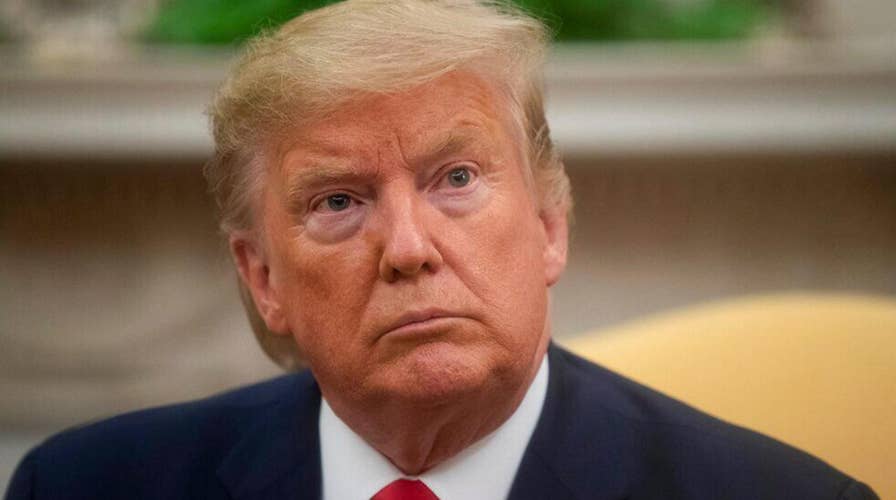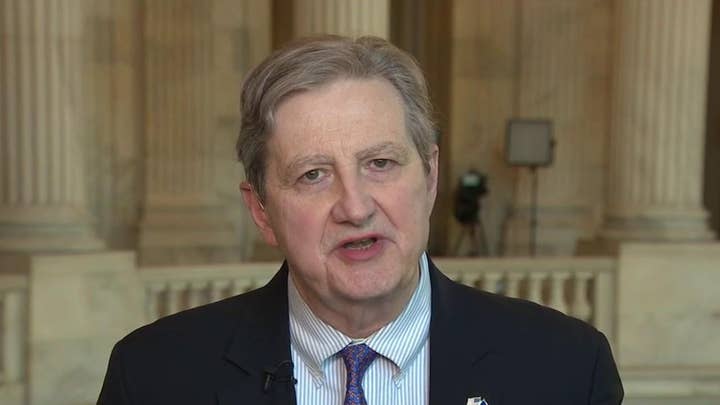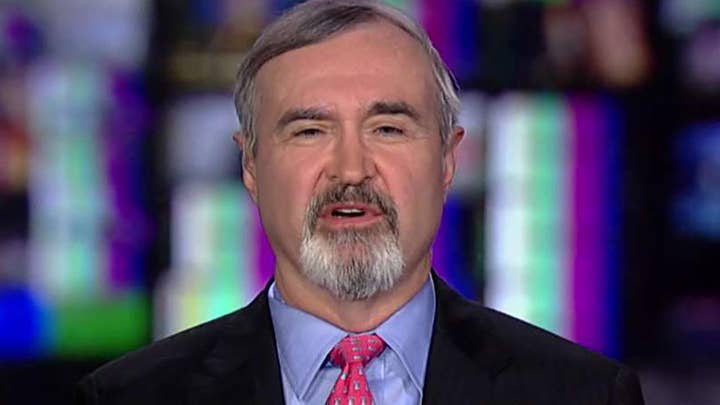Sessions: Impeachment case is overwhelmingly false
Former Attorney General Jeff Sessions shares his reaction to the Senate impeachment trial on 'Tucker Carlson Tonight.'
The first day of the impeachment trial of President Donald Trump was largely taken up with procedural issues. Senators argued over and then adopted an organizing resolution laying out the rules under which the trial will proceed.
In his opening statement, Minority Leader Chuck Schumer, D-N.Y., charged that the resolution proposed by Senate Majority Leader Mitch McConnell, R-Ky., was “partisan,” a “national disgrace,” and a “dark day in Senate history.”
All of this heated rhetoric was based on Schumer’s misleading claim that McConnell’s resolution was unfair and significantly different from the resolution governing Bill Clinton’s trial. Yet the resolution adopted by the Senate (after Republicans voted down and tabled a series of Democratic amendments) is substantially the same as the resolution approved by the Senate 100-0 for the Clinton trial.
On Thursday of last week, the preliminaries required to even debate this issue were accomplished when Senate President Pro Tempore Charles Grassley, R-Iowa, swore in the chief justice of the Supreme Court, John Roberts, who will preside over the trial under Section 3 of Article I of the Constitution. Roberts then swore in all of the senators.
Both sides have already filed briefs with the Senate. On Jan. 18 the House filed a 100-plus page “Trial Memorandum” and “Statement of Material Facts” outlining its case against President Trump.
The president filed an answer the same day, disputing the basis for his impeachment, calling it a “dangerous attack on the right of the American people to freely choose their president” and “a brazen and unlawful attempt to overturn the results of the 2016 election and interfere with the 2020 election.”
The House then filed a response to the president on Jan. 20 accusing the president of conduct intended to “bury the evidence” against him and to “cheat in the next election.” The president’s lawyers filed their own 100-page plus “Trial Memorandum” with an extensive appendix also on Jan. 20.
So what are the differences between the Clinton and Trump resolutions? Both provide that the House shall file with the Senate all “publicly available materials” produced by the House committees involved in the impeachment investigations, including “transcripts of public hearings or mark-ups and any materials printed by the House of Representatives” pursuant to the impeachment resolutions.
More from Opinion
The only difference is that in the Clinton case, these materials were automatically admitted into evidence. The Trump resolution provides that they will also be admitted into evidence “subject to any hearsay, evidentiary, or other objections that the President may make after opening presentations.” That makes sense from both a fairness and fundamental due process standpoint.
Why? Because in the Clinton impeachment investigation, unlike the Trump impeachment investigation, representatives of both political parties were allowed to fully cross-examine and call witnesses of their choice.
In the current case, House Democrats changed the rules to prevent Republicans and the president’s lawyers from being able to fully participate, cross-examine witnesses, or even call witnesses they believed had important relevant information.
So it makes sense for the president’s legal team to be able to object to hearsay evidence, evidence produced by witnesses that neither they nor Republicans representatives were allowed to fully question, or where they raise serious questions about the credibility (or lack thereof) and relevance of particular testimony produced in the House.
Just like in the Clinton impeachment, each side is being given 24 hours to present its case. Both sides took three days to do so in the Clinton case, and the revised resolution also gives both parties 24 hours over “3 session days” to make their arguments.
The Trump resolution – just like the Clinton resolution – then gives senators 16 hours to question the prosecution and the defense teams, although they must do so through written questions submitted by the chief justice.
While Democrats have been pushing to decide on whether or not to call witnesses now before the trial has even begun, that would violate the procedures approved during the Clinton impeachment, which are replicated in the Trump resolution.
Then and now, the Senate will decide whether witnesses should be called only after both sides have presented their case and the senators have had the opportunity to submit their questions to the House managers and the president’s defense team.
Senators were given up to six hours to make and argue motions about subpoenaing witnesses or evidence not in the record during the Clinton trial; this revised resolution gives senators up to four hours to do so.
CLICK HERE TO SIGN UP FOR OUR OPINION NEWSLETTER
Furthermore, both impeachment resolutions have the same procedure when it comes to witnesses if the Senate decides to allow any to be called. No live witnesses, instead, the parties will take their depositions and the Senate will then decide which witnesses will appear through their taped depositions.
While there was a lot of political theater on Tuesday in which the Democrats claimed the system has been “rigged” and that Sen. McConnell and Republicans were not following precedent, the revised resolution sets up procedural rules that adhere to the Clinton precedent very closely.
The only substantive change is the ability of the president’s team to object to evidence produced by the House, a change necessitated by the way in which Democrats themselves changed the rules in the House and failed to follow the Clinton precedents used during the Clinton impeachment investigation
It is not the Senate’s job to complete the House’s investigation. If House Democrats believe they did not talk to all of the relevant witnesses, why did they speed ahead with an impeachment vote before doing so?
CLICK HERE TO GET THE FOX NEWS APP
The substantive fireworks in the impeachment trial will start Wednesday. That’s when the Senate will hear any motions filed by the parties (other than motions to subpoena witnesses or documents) and House managers will begin to present their case against the president.
Everyone in Washington will be watching. Will the rest of America?

























